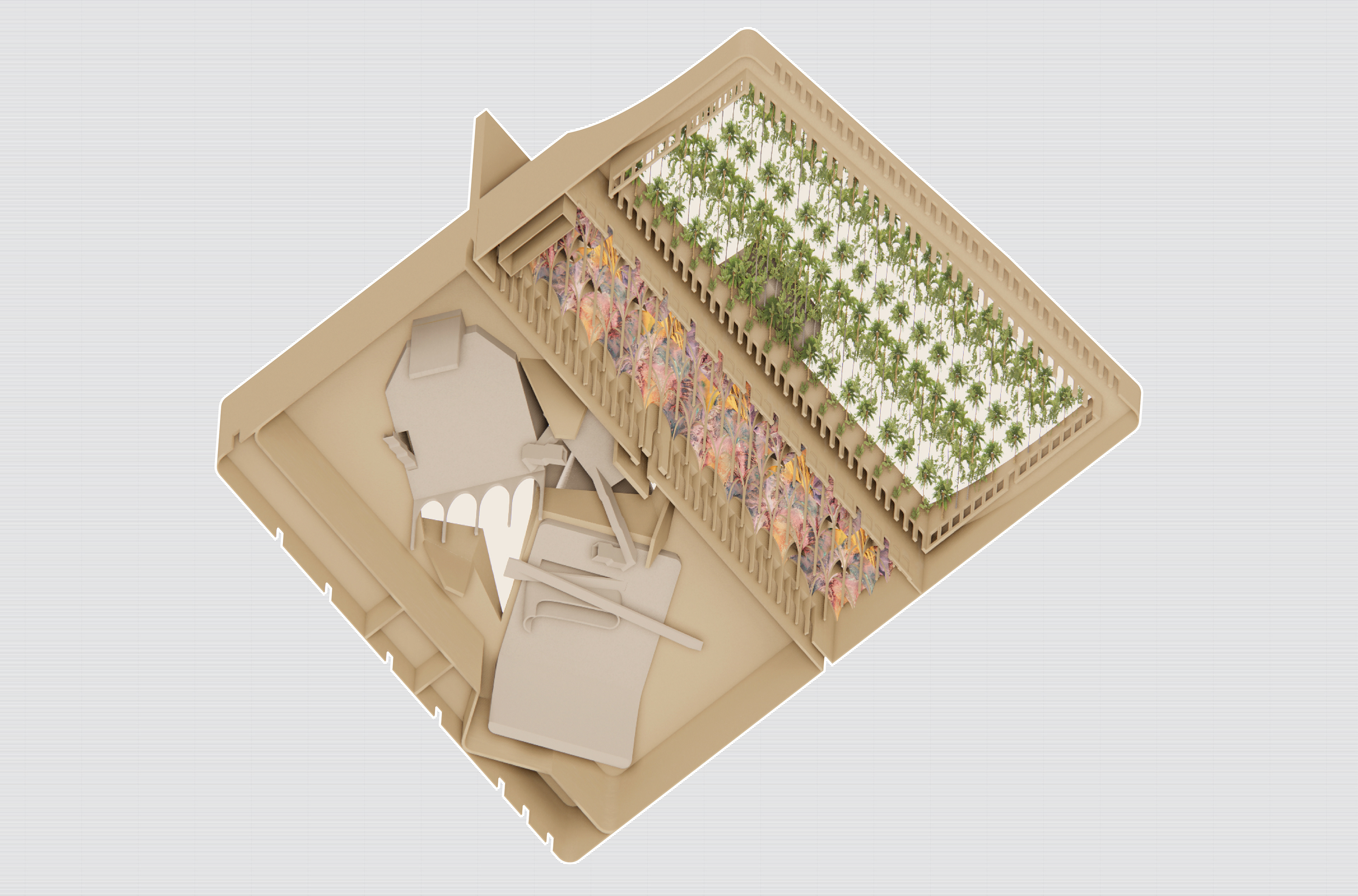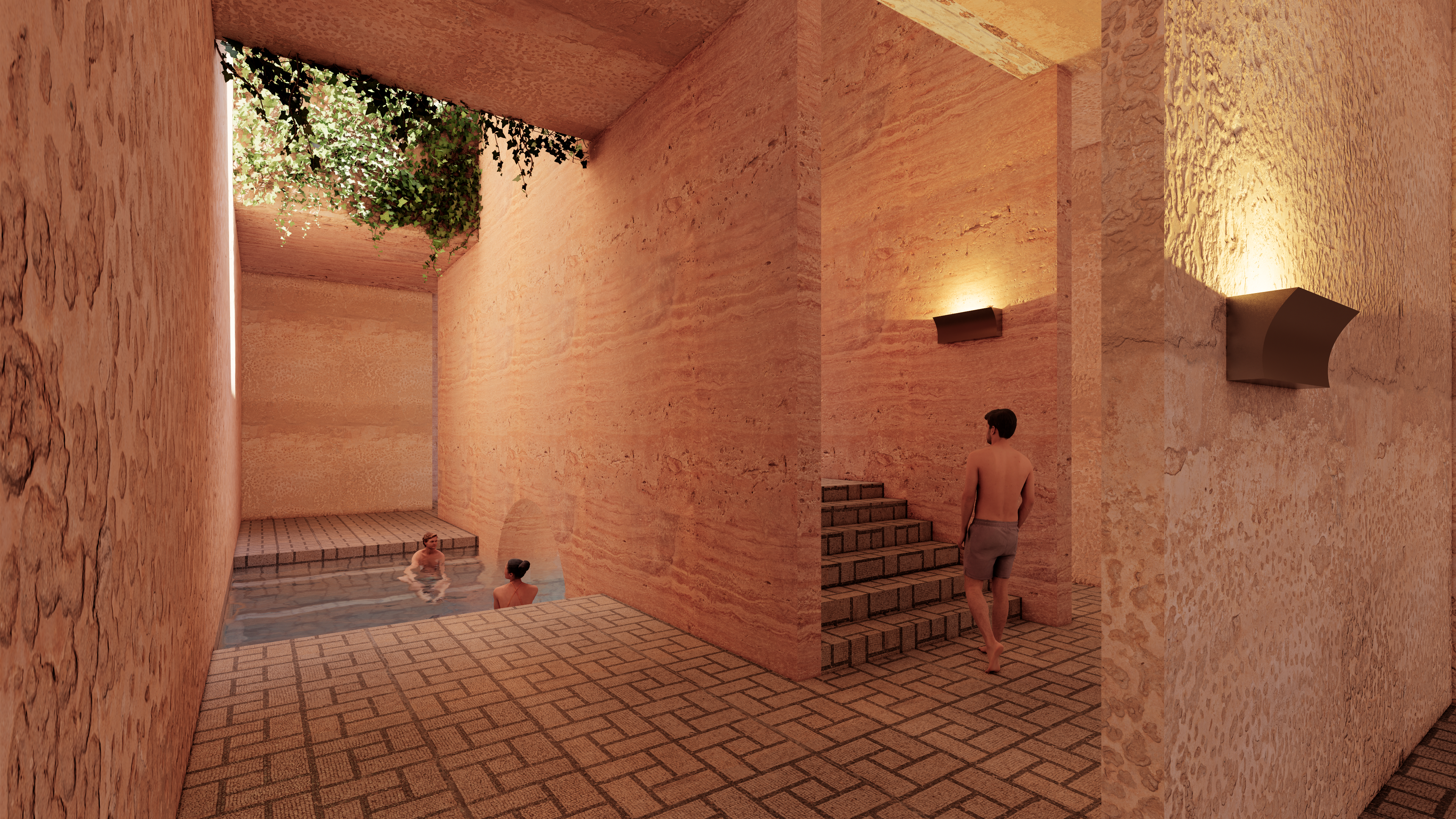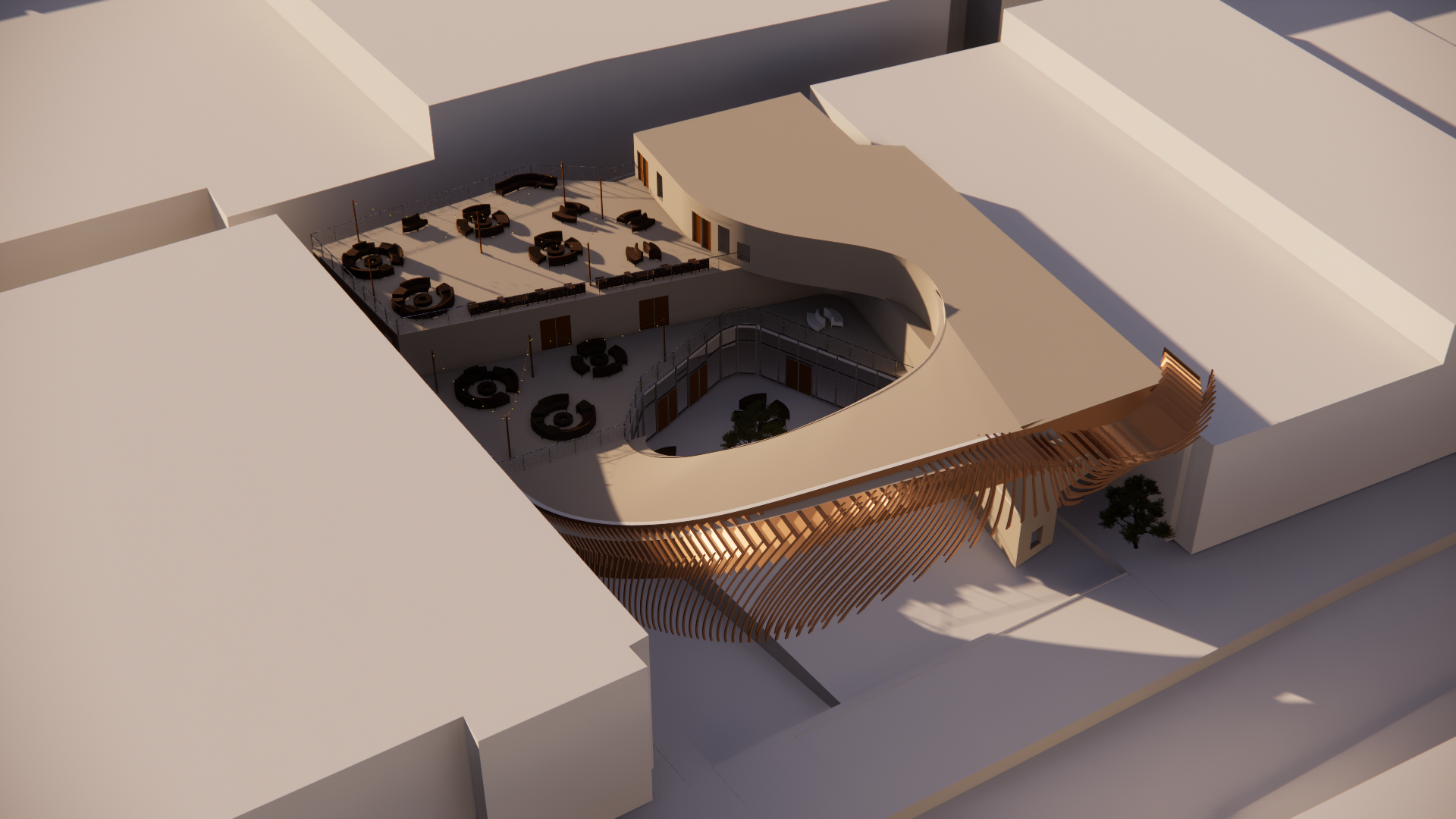Historically, places of worship have been housed within individual structures. They are places that seek to make a clear separation between the sacred and the profane, the non-secular and the secular. They have also strived to maintain boundaries between one another to reinforce the tenets of each faith. The autonomy of each enabled the architecture of the place of worship to find its own sense of reverence and awe. This thesis challenges the spaces to create a single complex that incorporates multiple religious spaces, while also promoting greater understanding and interaction between them. The project presents the opportunity to bring together three of the world’s leading religions into closer proximity within a single building.
The project for a new Abrahamic Family House in Abu Dhabi explores an architecture of distinct parts within a larger, uneasy whole. It seeks to create three different places of worship to promote interactions that contribute to a more optimistic, mutual awareness of the other. As a new institution located in a contemporary city, the project seeks to examine new ways to engage the vitality of the city around it, enabling a more relaxed relationship between the sacred and the profane.
Such a complex could be designed to facilitate interfaith dialogue and cooperation, as well as provide opportunities for joint worship and celebration. By breaking down traditional barriers, it also rethinks the relationship between sacred spaces and the public. This would allow the public to interact with sacred spaces in a more informal and accessible way.










